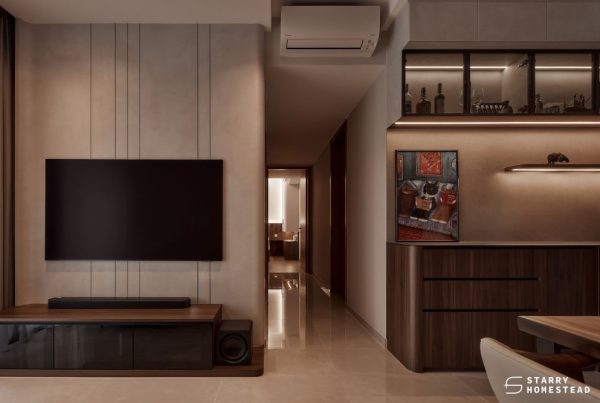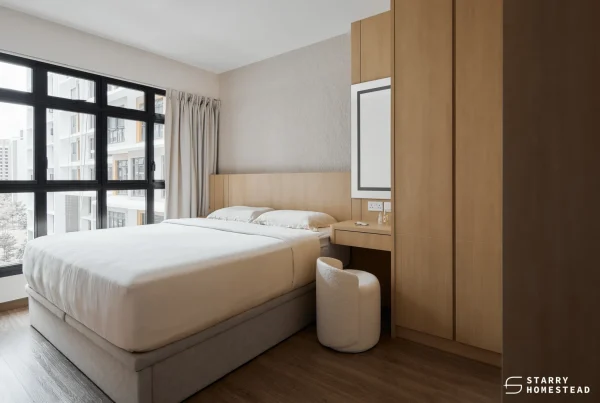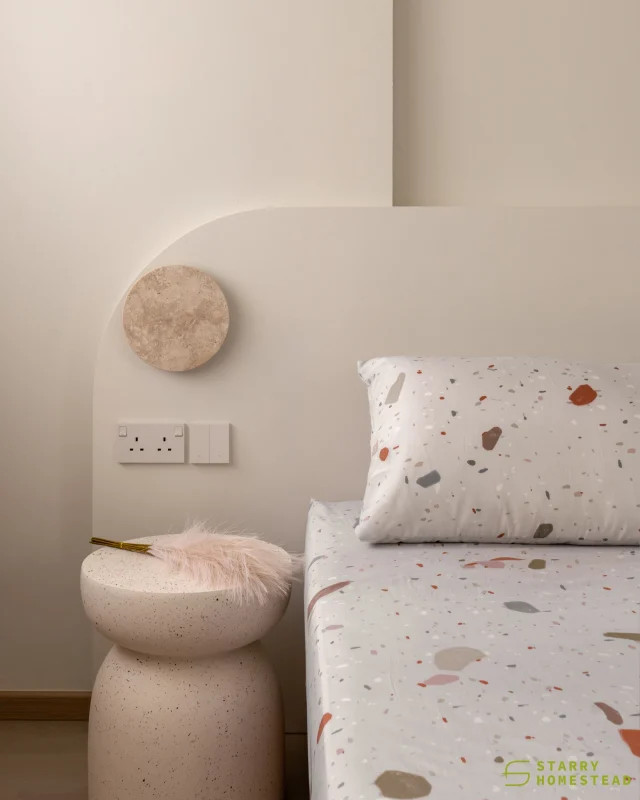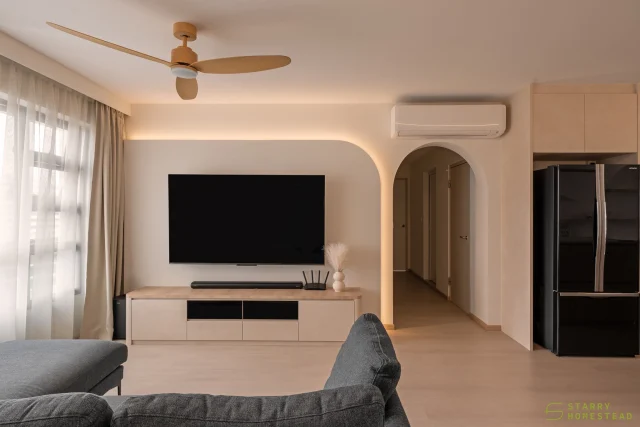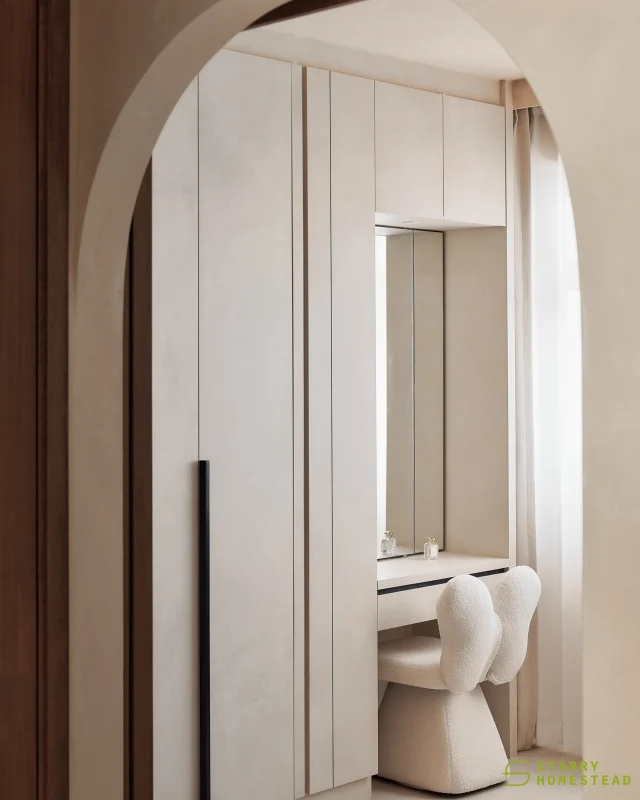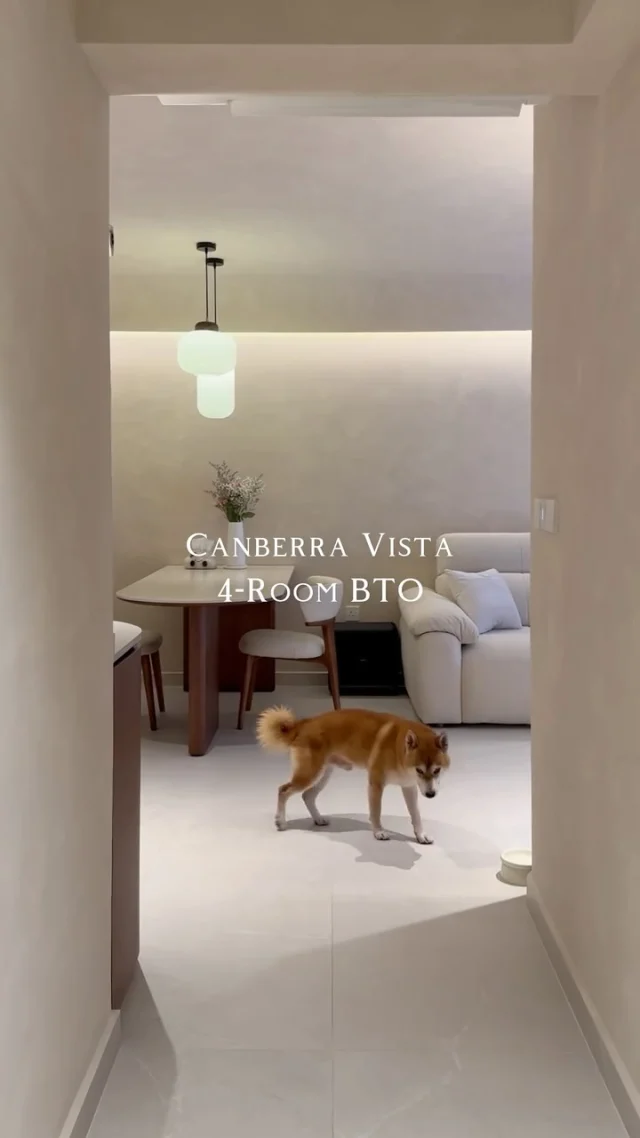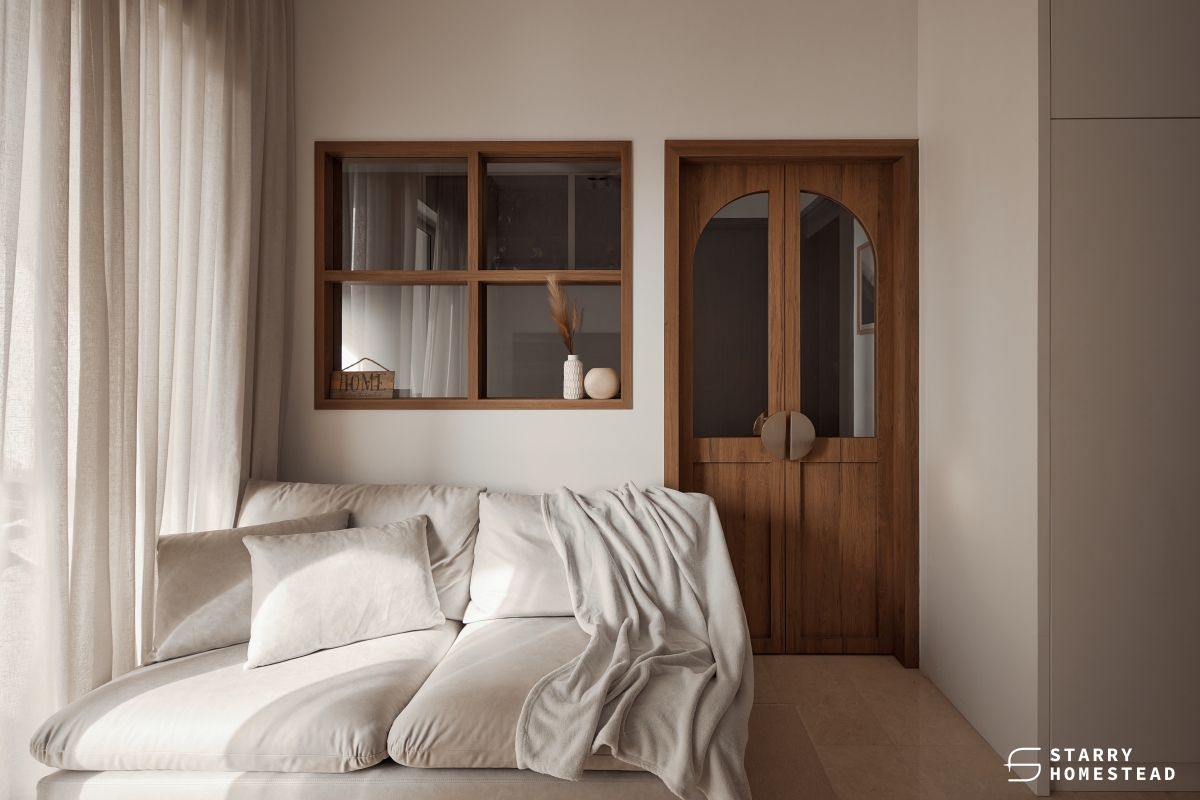 If you’ve ever felt caught between classic charm and sleek modern styles, you don’t need to stick to one. This is because how you design your home shouldn’t make you feel limited by a single aesthetic.
If you’ve ever felt caught between classic charm and sleek modern styles, you don’t need to stick to one. This is because how you design your home shouldn’t make you feel limited by a single aesthetic.
And there is a favoured design that already takes cues from these two different styles. Called transitional interior design, it offers the best of both worlds without committing entirely to either.
Decoding Transitional Design
Transitional interior design takes classic traditional looks and updates them with fresher, cleaner, and noticeably less “fussy” forms. To define this popular home design approach, several key elements consistently reappear, and these include:
- Tonal: A focus on neutral colour palettes that provide a clean and serene backdrop, which includes a soothing base of whites, creams, tans, and greys.
- Monochromatic: Using variations of a single colour or a very limited, cohesive palette.
- Textural: An emphasis on rich, tactile materials that add depth without visual clutter. Think fabrics like corduroy, suede, chenille, linen, and wool.
- Minimal Aesthetic: While not as sparse as minimalist interior design, it embraces uncluttered surfaces and a deliberate selection of items.
- Refined Embellishments: Unlike classic traditional homes, where ornate accents might dominate, in a transitional style setting, such décors are pared down, opting for a more refined and less elaborate presence.
The Adaptability of Transitional Style
The term “transitional” extends beyond merely combining traditional and modern elements. Designers interpret it as a versatile aesthetic that allows for significant personalisation to create a look that feels both fresh and enduring. This means your home can evolve right alongside your changing tastes without ever losing its core identity. To illustrate, you can easily bring in touches of minimalism or even mid-century design without disrupting this design style’s foundational character.
Also, the transitional style approach champions layering and encourages designers and homeowners alike to integrate diverse pieces, styles, and shapes from different aesthetics. And this results in a space that feels collected and authentic rather than strictly adhering to one era or trend.
Transitional vs. Contemporary Design: A Key Distinction
While transitional interior design and contemporary design may, at first glance, appear similar due to their clean lines, a key distinction exists between them.
Contemporary interior design represents what is current and evolving, continuously shifting to combine various popular styles of the present moment. In contrast, the concept of transitional design aims to achieve a sense of timelessness, giving the aesthetic a distinct character that results in a warmer, more layered, and softer overall execution.
For instance, when considering colour palettes and material choices, transitional style often leans towards greige tones, as well as incorporating unlacquered brass and organic textiles with a cohesive feel. Meanwhile, contemporary interiors might favour cooler metallic accents like chrome or brushed nickel and a sharper, often starker, palette like bright greens.
Hallmarks and Characteristics of Transitional Style
The enduring appeal of transitional interior design lies in its ability to create spaces that are simultaneously sophisticated, comfortable, and inviting.
- Neutral Colour Palettes: The foundation of transitional design is typically built upon a soothing base of whites, creams, browns, and greys. This allows the subtle textures and forms of the furnishings to take prominence.
- Strategic Pops of Colour Through Accessories: While the main palette remains neutral, vibrant or deeper hues are introduced thoughtfully through accessories such as cushions, throws, or artwork, adding visual interest without overwhelming the serene backdrop.
- Emphasis on Organic Textures and Layering: The warmth and depth in a transitional space often come from layering different textures, such as linen and cotton for upholstery and soft furnishings.
- Use of Statement Lighting: Lighting fixtures often blend traditional forms with modern materials or vice versa, serving as focal points that are both functional and artistic. Elegant chandeliers with clean lines or contemporary lamps with classic bases are common.
- Incorporation of Metallic Accents: Subtle touches of metallic accents, such as bronze, gold, and copper, are used to add a hint of modernity.
- Streamlined Furniture: Central to this style is the use of comfortable, practical furniture that often features clean lines and subtle curves.
For a truly cohesive and unified feel, it’s important to repeat elements of colour, texture, and shape throughout the space. This repetition creates a subtle visual rhythm, ensuring that even with its blend of styles, the interior maintains a harmonious, almost monolithic appearance.
Visualising Transitional Design: Project Examples
To truly appreciate the versatility of this aesthetic, it is helpful to visualise how its principles are applied in different areas of the home.
Starry Homestead, known for award-winning interior designs in Singapore, excels at crafting these balanced spaces for clients. Here are some examples of projects completed using this interior design style.
1. Transitional Kitchen Spaces
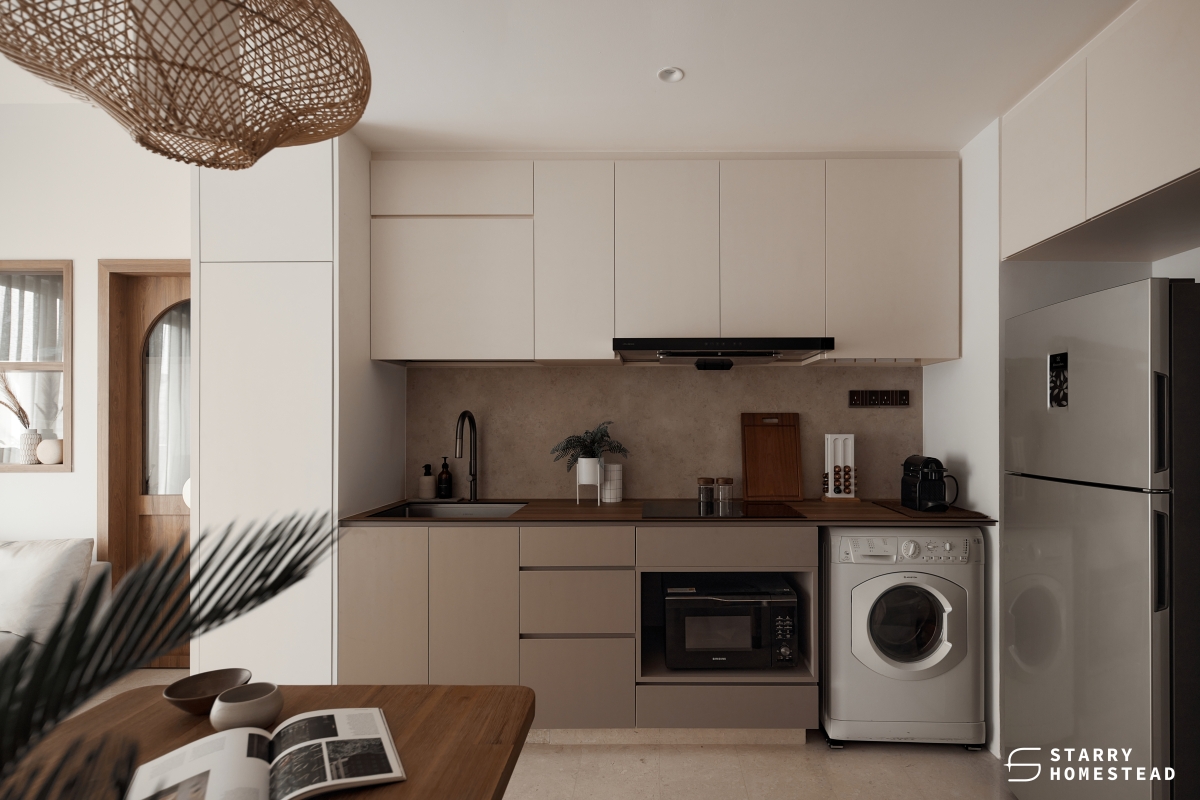 In a transitional kitchen, its interior design typically features sleek cabinetry with minimal ornamentation, maintained in a neutral palette of whites, creams, or soft greys. Meanwhile, the atmosphere remains uncluttered, yet it feels inviting. Common elements often found are elegant pendant lighting above an island, which might blend traditional shapes with modern finishes, and integrated appliances that maintain clean lines.
In a transitional kitchen, its interior design typically features sleek cabinetry with minimal ornamentation, maintained in a neutral palette of whites, creams, or soft greys. Meanwhile, the atmosphere remains uncluttered, yet it feels inviting. Common elements often found are elegant pendant lighting above an island, which might blend traditional shapes with modern finishes, and integrated appliances that maintain clean lines.
Considering an HDB kitchen renovation in this style, designed by renowned interior designers like Starry Homestead, can significantly elevate its appeal, offering both beauty and practicality. For example, our 283 Bedok South Ave 3 project masterfully blends neutral palettes with inviting coastal textures and hues, featuring elements such as an elegant rattan hanging light that creates a serene and functional culinary space. This approach redefines versatility, providing homeowners with a peaceful and aesthetically pleasing environment that looks like a five-star resort.
2. Transitional Living Areas
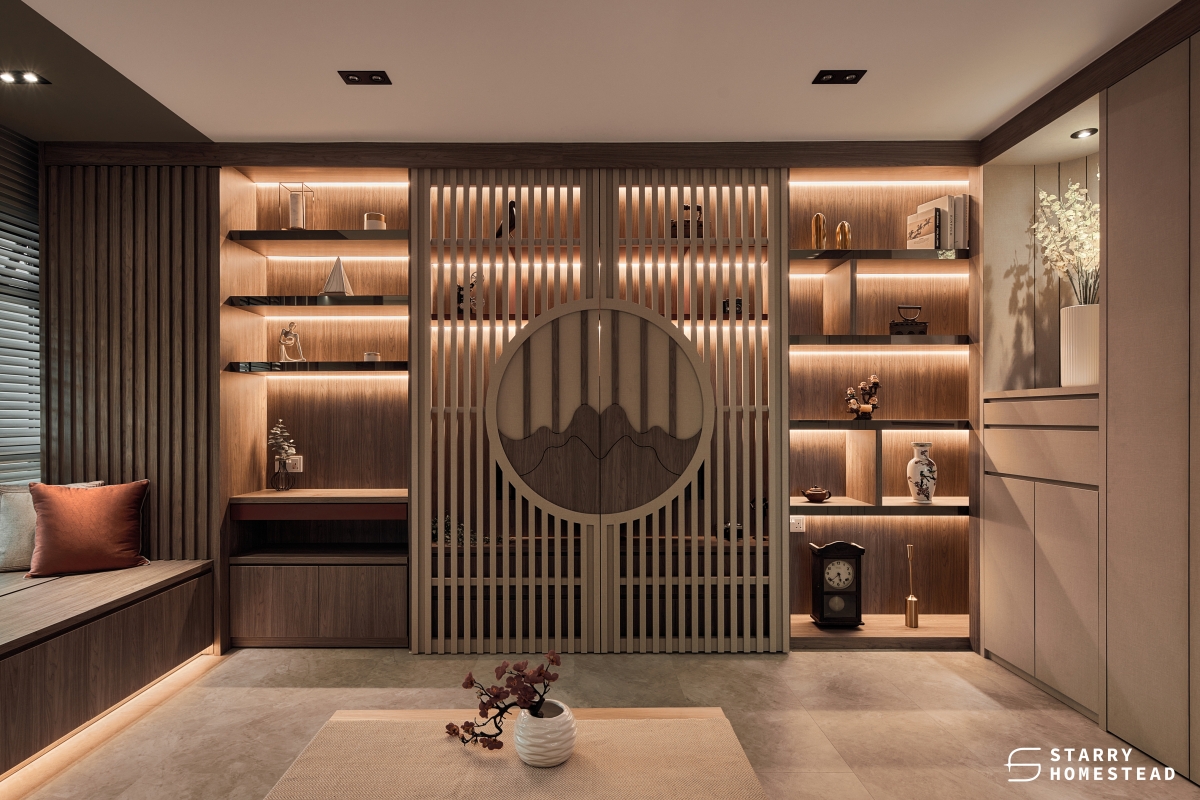 For living spaces, transitional style often suggests opting for warm palettes, perhaps incorporating deeper greiges or soft taupes, and introducing coarser textiles such as woven fabrics or rattan accents. As for the furniture, it might include a classic sofa with clean lines and armchairs that offer a contemporary twist on a classic silhouette.
For living spaces, transitional style often suggests opting for warm palettes, perhaps incorporating deeper greiges or soft taupes, and introducing coarser textiles such as woven fabrics or rattan accents. As for the furniture, it might include a classic sofa with clean lines and armchairs that offer a contemporary twist on a classic silhouette.
This harmonious blend is beautifully exemplified in our residential interior design project at Bedok North Road. Here, the living area struck the perfect balance of traditional chic through a mix of Oriental and modern accents. This includes a luxurious gold wallpaper, which provides a rich backdrop, subtly complemented by the organic texture of the rattan table mats. Moreover, carefully curated antique décor, such as exquisite teapots, is thoughtfully displayed to infuse a sense of history and character into the space.
3. Transitional Sleeping Quarters
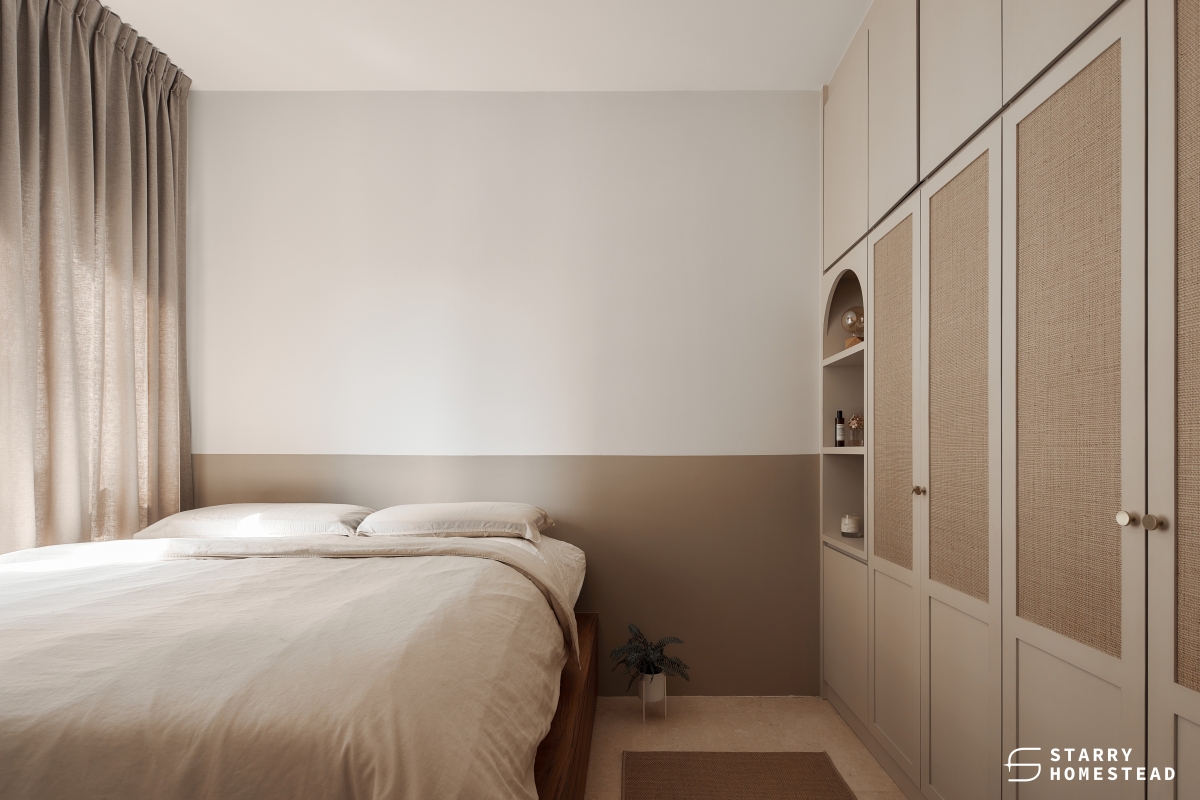
A transitional aesthetic in the bedroom can be achieved by thoughtfully pairing modern furniture, such as an upholstered headboard and carefully chosen traditional décor accents. This might involve introducing elegant chandeliers, classic table lamps with contemporary shades, or textured throws.
A beautiful example of this approach is our 283 Bedok South Avenue 3 project. For this, the master bedroom embraces innovative design to maximise available space while delivering both comfort and utility without compromising on aesthetics.
A sleek platform bed, set within a calming neutral palette, anchors the room, while the subtle warmth of rattan laminate introduces an organic texture that beautifully complements the overall serene feel. Furthermore, thoughtfully placed mini lamps add gentle illumination, creating a peaceful retreat that perfectly marries modern functionality with understated charm.
Incorporating Transitional Style Into Your Home
 Implementing transitional style into your own living space involves making intentional choices that blend different elements harmoniously.
Implementing transitional style into your own living space involves making intentional choices that blend different elements harmoniously.
Start by thinking of a “paint strip” analogy for your colour choices. Just as shades on a paint strip smoothly evolve, so too should your room’s palette, with subtle shifts in tone creating depth without harsh contrasts. When curating your space, try picking three beloved objects or furniture pieces you already own or are drawn to. Then, pinpoint common connections between them, such as a shared colour, a recurring shape, or a consistent material. This “trifecta” will then serve as your guiding principle. Build the rest of the space by ensuring any new additions naturally fit within this established framework.
To further infuse the transitional design style, bring décors in neutral textiles with tone-on-tone layering through your upholstery, curtains, and rugs. These textures prevent the neutral palette from feeling flat and add depth. Lastly, introduce specific elements like subtle unlacquered brass hardware or light fixtures, warm greige tones on walls or clean-lined, comfortable furniture. These deliberate choices will define your living space.
For homeowners in Singapore seeking to create a sophisticated yet inviting space that truly reflects their personal style, the principles of transitional design provide an excellent framework. Starry Homestead possesses the expertise and creative vision to guide you through this process. Our comprehensive interior design services ensure that every element, from initial concept to final execution, culminates in a space that is not only beautiful but also perfectly suited to your lifestyle.
Reach out to us today for a consultation and start your residential interior design journey towards a home that embodies timeless grace and modern comfort.
